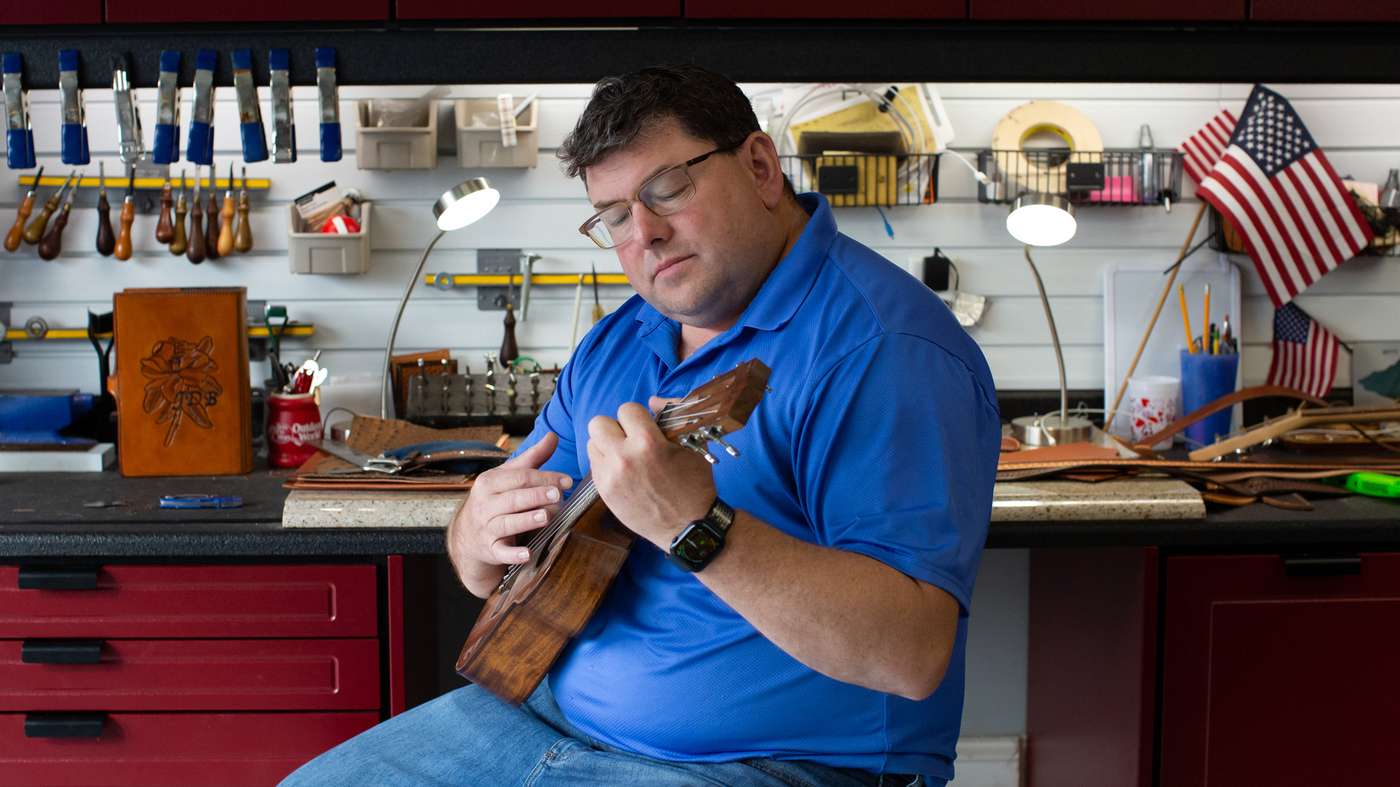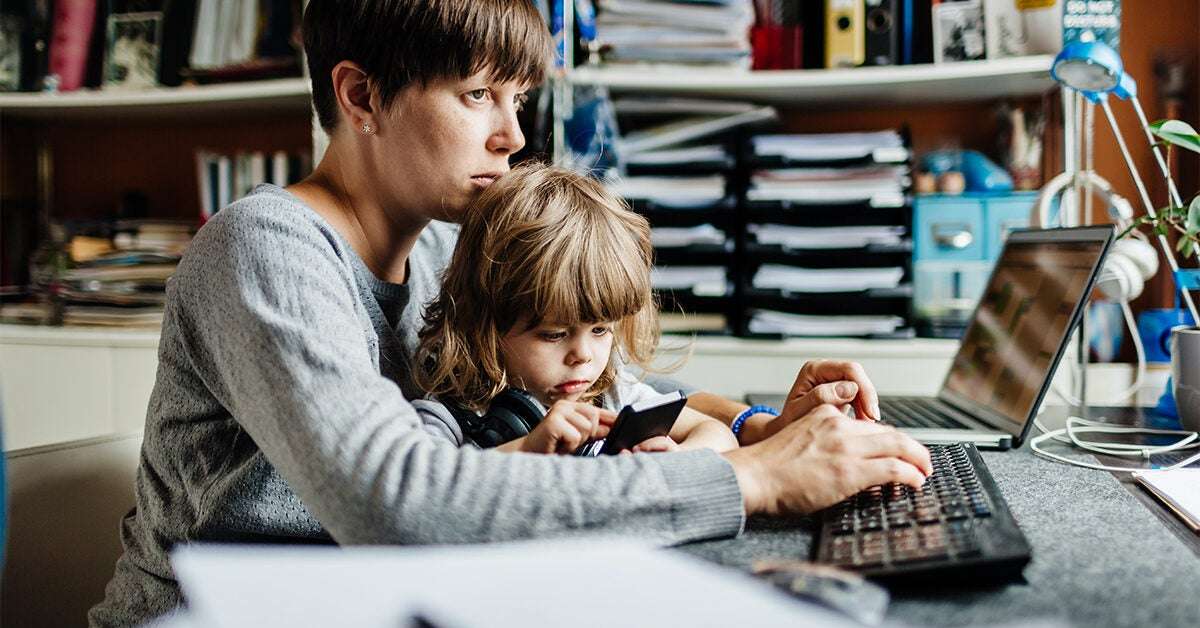Art and music therapy seem to help with brain disorders. Scientists want to know why
 Enlarge this image
Enlarge this image
toggle caption
Madeline Gray for NPR
Madeline Gray for NPR
When Michael Schneider’s anxiety and PTSD flare up, he reaches for the ukulele he keeps next to his computer.
“I can’t actually play a song,” says Schneider, who suffered two serious brain injuries during nearly 22 years in the Marines. “But I can play chords to take my stress level down.”
It’s a technique Schneider learned through Creative Forces, an arts therapy initiative sponsored by the National Endowment for the Arts, in partnership with the departments of Defense and Veterans Affairs.
It’s also an example of how arts therapies are increasingly being used to treat brain conditions including PTSD, depression, Parkinson’s and Alzheimer’s.
But most of these treatments, ranging from music to poetry to visual arts, still have not undergone rigorous scientific testing. So artists and brain scientists have launched an initiative called the NeuroArts Blueprint to change that.
The initiative is the result of a partnership between the Johns Hopkins International Arts + Mind Lab Center for Applied Neuroaesthetics and the Aspen Institute’s Health, Medicine and Society Program. Its leadership includes soprano Renée Fleming, actress and playwright Anna Deavere Smith, and Dr. Eric Nestler, who directs the Friedman Brain Institute at Mt. Sinai’s Icahn School of Medicine.
One goal of the NeuroArts initiative is to measure how arts therapies change the brains of people like Schneider.
“I had a traumatic brain injury when I was involved in a helicopter incident on board a U.S. Naval vessel,” he explains. That was in 2005.
Later that same year, he experienced sudden decompression – the aviator’s version of the bends — while training for high-altitude flights. The result was like a stroke.
“On my right side of my body I lost all feeling,” he says.
 Enlarge this image
Enlarge this image
toggle caption
Madeline Gray for NPR
Madeline Gray for NPR
Schneider recovered from both incidents. But they took a toll on his brain. And in 2014, he began having serious problems.
“I had this progression of really bad seizures,” he says. “At one point I was having 20 to 40 seizures a day.”
He also developed symptoms of post-traumatic stress disorder, known as PTSD, and depression. Schneider went to Walter Reed National Military Medical Center in Bethesda for treatment. But he wasn’t getting better.
“I’d lost hope,” he says. “I didn’t really believe that I was going to make it through the next couple of years. My brain was just shutting down.”
That’s when military doctors referred Schneider to Rebecca Vaudreuil, a music therapist at Creative Forces and the Henry M. Jackson Foundation. Early on, Vaudreuil learned something intriguing about the big Marine from Marquette, Michigan.
“He had a history in doing theater arts,” she says. “And so I could tell, you know, there was some priming there.”
Vaudreuil had Schneider play a few notes on a piano.
“I started to hum the notes and she’s like, ‘You can sing,'” he recalls.
So they sang Andrea Bocelli’s operatic hit Con Te Partirò.
That led to a lot of musical exploration, including the ukulele. It also helped Schneider start talking about his struggles and gave him a way to reduce his seizures and relieve some of his anxiety and PTSD.
“Relearning music took away that fight-or-flight, that ingrained piece of how I trained,” he says. “It was able to open up all these new pathways through my brain.”
Personal experiences like Schneider’s are beginning to get some scientific confirmation, Vaudreuil says.
“We know that when we receive music, even when we hear music, we’re activating multiple parts of the brain,” she says. And studies suggest that this strengthens brain circuits that help repair damage.
There are also hints that the brain changes in response to other art therapies, like dance, poetry, painting, sculpture, even leatherwork. But so far, there hasn’t been much scientific study to back that up.
 Enlarge this image
Enlarge this image
toggle caption
Madeline Gray for NPR
Madeline Gray for NPR
“We’re going to need to provide the robust, empirical data demonstrating that there is efficacy,” says Nestler, a co-chair of the NeuroArts initiative advisory board.
“It’s harder in some ways to do that with music or art than with a new medication,” he says. “On the other hand, I think it’s very doable.”
Nestler says advances in brain imaging technology are making it possible to objectively measure brain changes produced by arts therapies.
For example, there are lots of anecdotal reports of Alzheimer’s patients who can no longer speak, but will begin singing and become more interactive when they hear a familiar song.
“Now, in addition to reporting the behavioral changes, one could identify a greater level of activity in circuits in the brain related to memory and emotions,” Nestler says.
Fleming, another co-chair of the advisory board, has actually seen the effect of singing on her own brain.
During a visit to the National Institutes of Health in 2017, she agreed to perform while inside an MRI scanner.
“They had me singing, imagining singing and speaking,” she says. “They would probably have guessed that singing would have the largest effect on my brain, but it didn’t. It was imagining singing.”
 Enlarge this image
Enlarge this image
toggle caption
National Institutes of Health via AP
National Institutes of Health via AP
For Fleming, the existence of something like the NeuroArts Blueprint represents a big and important shift in thinking since the early days of her career.
“I had terrible stage fright. I had somatic pain from performance pressure,” she says. But at the time, doctors tended to dismiss symptoms involving the link between mind and body.
So now Fleming makes a point of using her performance trips to meet with brain scientists and arts therapists.
“I saw a music therapist working with a gentleman who’d had a stroke and couldn’t speak,” she says. “And within one session of singing he could communicate.”
In order to understand why that happened, she says, neuroscientists and artists need to create a new field of expertise: neuroarts.
Nestler, the neuroscientist, agrees.
“We’ve realized how our two worlds can merge in this really interesting way,” he says.
 Enlarge this image
Enlarge this image
toggle caption
Shelby Knowles/NPR
Shelby Knowles/NPR
But Nestler says even with good scientific evidence, arts therapies are likely to face obstacles to gaining widespread acceptance and support.
“No one asks a question about paying $100,000 or more for spinal surgery,” he says. But coverage of music therapy for a brain condition, he says, “that is going to be a major struggle.”

As part of the Child Life Department, art and music therapy at Seattle Children’s introduces different techniques to promote patients’ physical and mental health, either at patients’ bedside to assist in the art-making process or virtually in smaller groups and one-to-one sessions.
Through a variety of creative materials and techniques, which can include drawing, painting, clay and collage, patients learn about their relationship with art with support from art therapists to help them express themselves, process emotions and connect with loved ones from afar.
Seattle Children’s art therapist, Helena Hillinga Haas, leads many of these individual and virtual group sessions and explains how the process can help develop autonomy, strength and resilience for children and teenagers coping with symptoms, anxiety and traumatic experiences.
Seattle Children’s art therapy program receives funding from a variety of philanthropic entities, in addition to supporting virtual art therapy services one day per week specifically for family members of cancer care patients as part of a new grant. The virtual sessions are new and a result of needing to pivot the way services are provided for family members of patients with childhood cancers and blood disorders – including complex conditions like sickle cell disease—conditions that put these patients at higher risk of severe illness from COVID-19. Other family members can receive these services remotely, which has been a relief to many parents and caregivers who see an increase in loneliness and isolation as a result of the pandemic.

“For patients, creating art and exploring new art materials is an important part of themselves to express their identity and show who they are beyond their illness,” Haas said. “And with the virtual sessions, it’s really impactful to have access to other siblings who can relate and share through their own imagery how they have been impacted in real time by an illness in the family. This is a unique and non-threatening way to express themselves. It is empowering.”
The virtual sessions for siblings of cancer care patients led by Haas during the pandemic also have closely tied technology and art together. By building out custom sites in Minecraft with assistance from Garrett Goody, a therapeutic gaming specialist, or simply participating in joint illustration sessions using interactive drawing apps, children can spend time with siblings and loved ones remotely all over the country to showcase each other’s artistic works and share their experiences. Building important social emotional skills — like empathy, problem-solving, and decision-making — are key goals of the virtual art therapy groups.
“You get to see how the process of art therapy unfolds by creating artwork together and there is a level of excitement to be recognized for their work,” Haas said.
RESOURCES:
Seattle Children’s Music and Art Therapy



